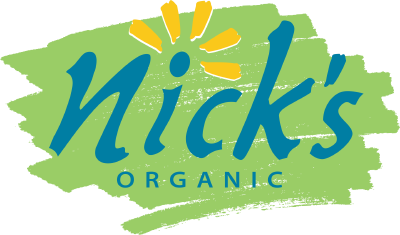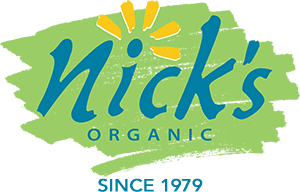Order Turkey
Join our email list to be notified when 2021 orders are being accepted.
We offer fresh or frozen birds in standard White or Heritage breeds. They are packed in a plastic bag and are available on the Tuesday and Wednesday before Thanksgiving. The liver, heart, and neck are included. We will notify you promptly and return your deposit if we cannot fill your turkey order.

Our Turkeys
Heritage
The heritage breeds are closer to the wild turkey. They give equal amounts of white and dark meat. They cook more evenly because the legs and breasts are similar in size. They take over twice as long to grow to market weight giving the birds a chance to more fully develop their muscles. Moving daily to fresh pasture and foraging for insects over this longer growing period gives the fat more complex flavors. And giving the birds full access to fresh air, sunlight and the space to exhibit their natural behaviors results in a moist meat with a fine grained texture. On average, heritage turkeys are smaller than the white turkeys.
(approx. 8-20 lbs.) $9.99/lb., $25 deposit/bird
Flavor
Heritage turkeys contain a higher percentage of dark meat—about half of the edible weight. In addition, the meat tends to be firmer and have slightly more flavor. These traits are due to several factors. The birds have lived longer and had more time to exercise and develop their muscles, producing a well defined firm meat. Their increased lifespan has allowed more time to eat a varied diet that includes grass and insects and to create some stores of fat, resulting in a rich, complex flavor. The skin is a little thicker and can be cooked to a crispy brown.
History and Growth Characteristics
At the turn of the 21st century all heritage turkey breeds were endangered, and it is only recently that consumer demand has stimulated increased production to preserve these breeds. Heritage turkeys are domesticated breeds closer to the original lineage of the wild turkeys known to the Pilgrims and Indians. They retain biological characteristics enabling them to be raised more closely to the natural behavior and life cycle of their wild ancestors. Heritage turkeys have a relatively long lifespan, a much slower growth rate, and can breed and hatch naturally without human intervention. In addition, heritage breeds tend to be naturally sturdy and healthy when raised outside on pasture.
Cooking
Because the leg and the breast meat are similarly sized in our heritage breeds, it is easier to cook the bird without drying out the legs or undercooking the breast. Pre-heat oven to 400 and roast at 325-350 degrees. Take the giblets out of the bird before putting in the oven. To prevent drying out, it is recommended that you roast 10-12 minutes for each pound rather than 15 minutes. Larger birds, over 18 pounds, normally require less cooking time—10 minutes per pound. Check temperature deep in the center of the breast half an hour before you think the turkey might be done. To ensure food safety, the whole turkey should be cooked to a minimum 160 degrees. In fact, as long as you reach a minimum of 160 degrees, turkeys are very forgiving in their cooking time. It’s not the end of the world if the temperature goes higher—it may get a little bit dried but it will still be delicious! After cooking let the turkey “rest” at room temperature for 15-30 minutes.
Because the breast is oversized in proportion to the legs, cooking the birds evenly presents a challenge lest the legs dry out before the breast is fully cooked. Cook as outlined above, but check with a meat thermometer so as to remove the turkey promptly from the oven when the deepest part of breast reaches 160 degrees. Stuffing the turkey cavity can add to the necessary cooking time and increase the risk of drying of the legs. Note: For safety the center of stuffing should be 165 degrees according to USDA.
Cost, Size, and Breed
Our expenses to raise the heritage birds are higher. These slightly smaller and beautifully plumed birds take over twice as long to grow to a lower market weight, and the one day old baby poults cost considerably more. Most of our heritage birds will be between 10-17 pounds, while there will be a few smaller hens and some heavier, larger toms.
We will identify the breed you receive, but we cannot guarantee which breed you will receive. We feel the eating quality is similar. On average, the Narragansetts may weigh a pound or two less and have a generally hardier constitution making them easier to raise.
Heritage Bourbon Reds This heritage breed is named for its beautiful colorful plumage and for Bourbon County KY. Developed out of earlier breeds from PA and surrounding states in the early 1900’s the Reds were popular on Thanksgiving tables up to the 1930’s and 40’s.
Heritage Narragansett The Narragansett, named for their New England origin, has black, gray, tan, and white feathers associated with pictures of the Pilgrim’s birds. This very old breed, going back to early colonial times, is prized for its excellent temperament and good maternal abilities.
Heritage Standard Bronze The Bronze was one of the most popular American Thanksgiving birds from the late 18th century through first half of the 20th century. The colonists crossed wild Eastern US turkeys with domesticated European turkeys to come up with a larger bird with a more docile temperament. The coppery-bronze colored metallic sheen on the feathers is inherited from the wild ancestors. Not to be confused with the early 20th century bred Broad Breasted Bronze, the Standard has long legs and good health attributes.
White
The modern commercial white turkeys were developed to produce ease of processing and quick growth. Due to the large breast meat, they have approximately 2/3 white meat and 1/3 dark meat. They tend to weigh more than the heritage breeds. Taste is similar to the heritage breeds because they are also on pasture all day long eating bugs and grass.
$4.99/lb. (approx. 12-22 lb.), $25 deposit/bird
Our birds average 12-22 pounds, but we do have a few smaller and larger birds as well. When fed our organic grain and allowed to exercise and forage insects and grass on our organic pastures, these birds develop fine textured and flavorful predominantly white meat that is tender and juicy. Because of their exercise and pasture based diet, these birds develop more favor than birds raised in large confined poultry houses.

